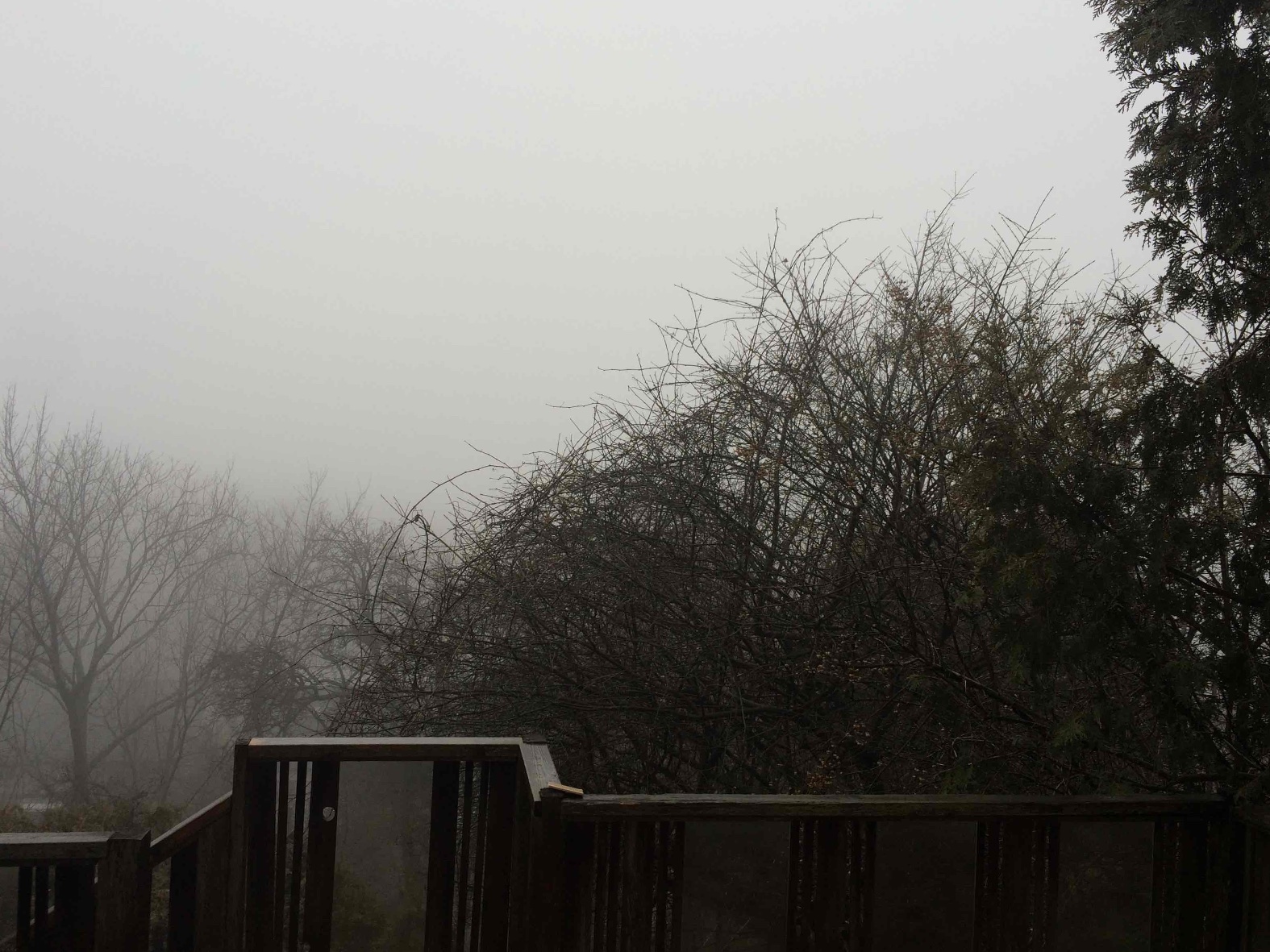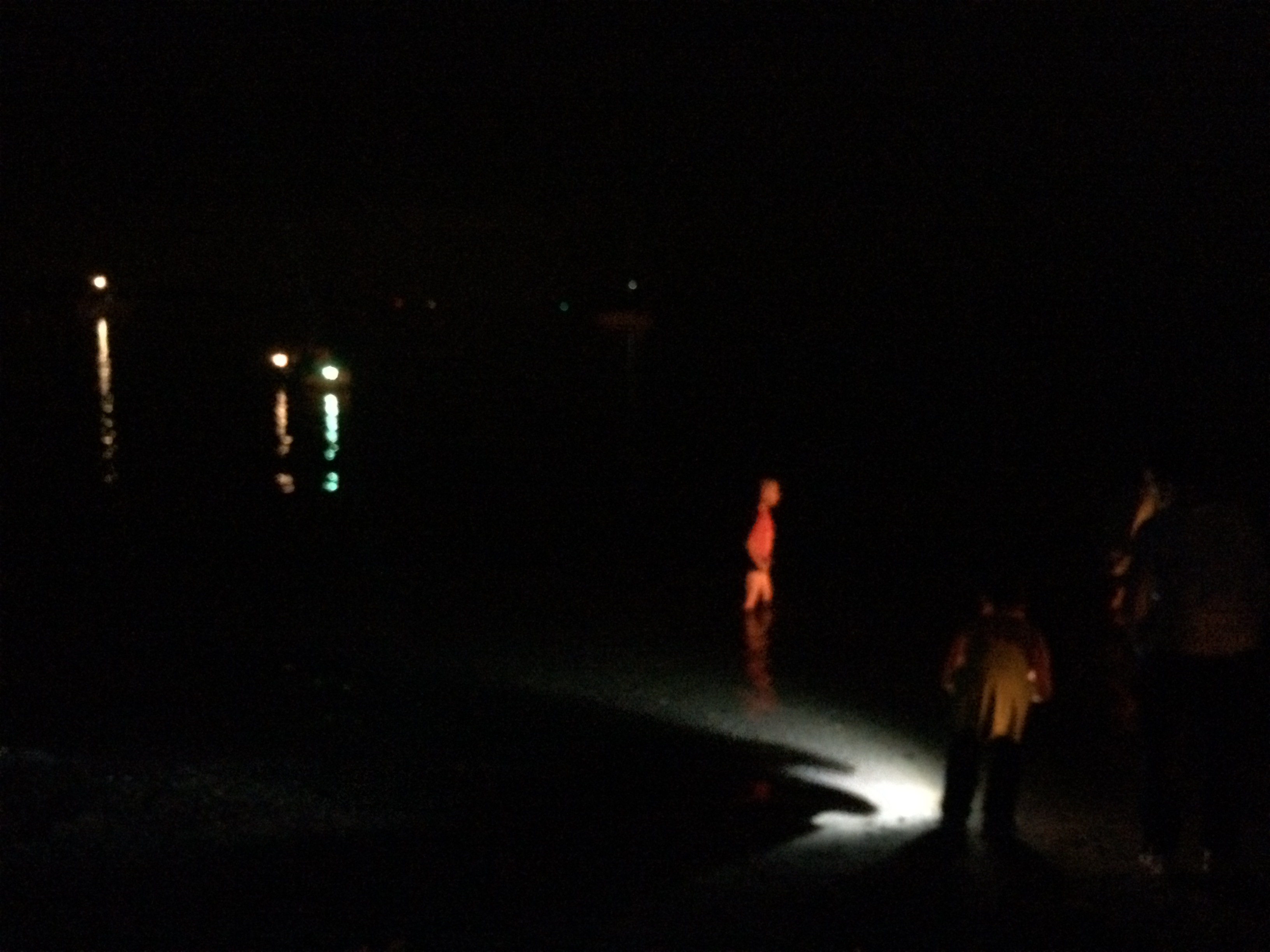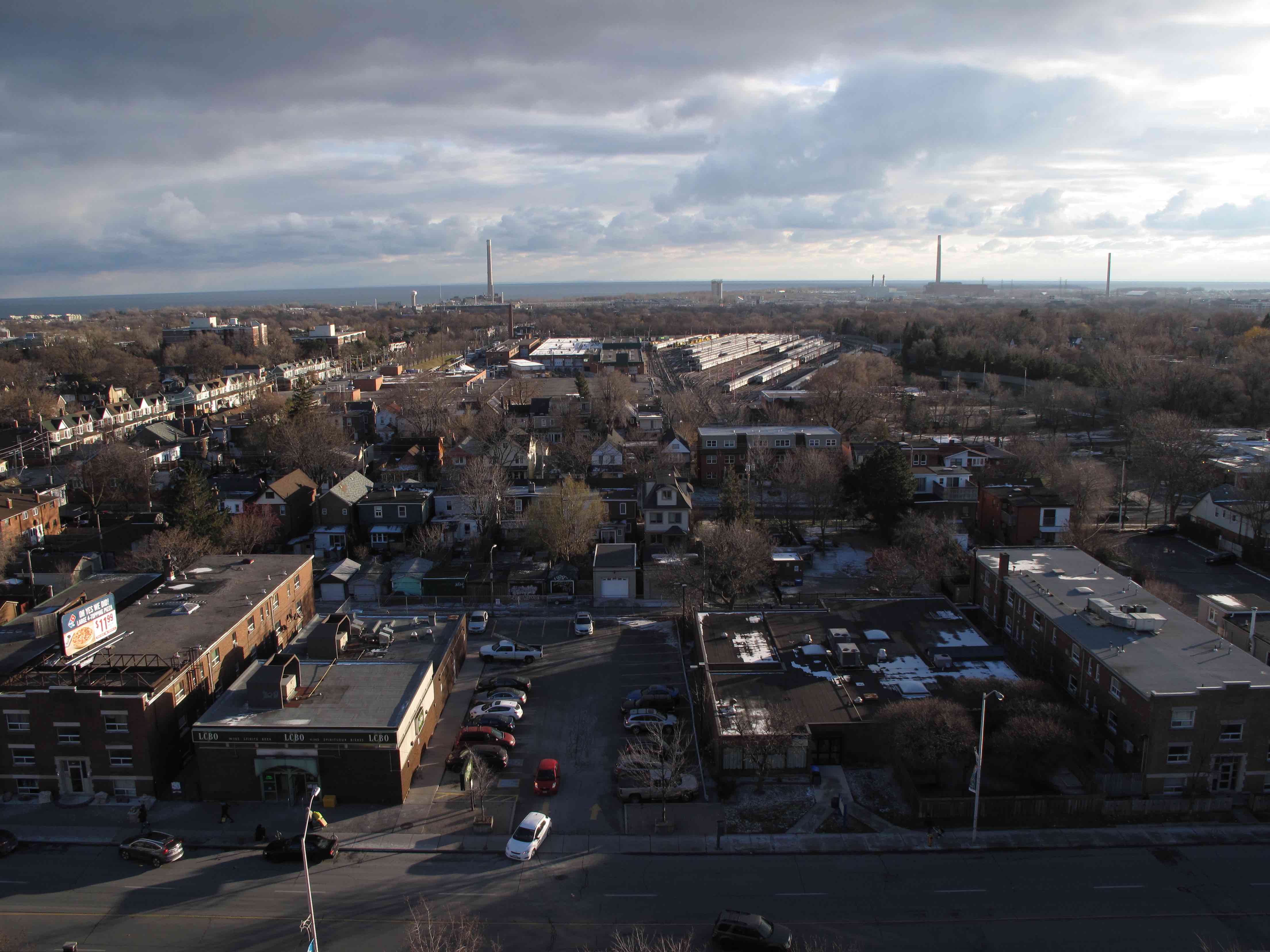
I never told anyone what I knew. Which was that it wasn’t for anyone else what it was for me.
— Ted Berrigan, from the poem 'Cranston Near The City Line'
“What the hell are you looking at?"
“Does it bother you?"
“Yeah, it does.”
“I’m sorry.”
“You think you’re going to get to know me, but you won’t.”
“I’m willing to try.”
“I’m not anything like you think.”
“I don’t think anything. Why don’t you tell me what you’re like?"
“Tell you what? I don’t know. Why are we even talking?"
“I want to see how I can help.”
“I don’t need help. I’m just tired. I don’t want to think.”
Listening to a recording of my first encounter with the psychiatrist who would finally help me to gain control of my mental illness, it is hard to recognize the low, robotic snarl that is my own voice. Every word abrades with a drug-compressed anger, and there is an agitated physicality about them that even now is frightening. I am, quite literally, bouncing off the walls.
It was April, 2000. I had just resigned as a director of the publicly listed internet company I had co-founded and its board, caught wrong-footed by my sudden departure – they had hoped to engineer it on their own terms – was busy concocting responses to enquiries from a local press that sniffed a scandal. And there was plenty of lurid fodder for it. I was threatened with a suit for sexual harassment, and several employees, at least one director, a co-founder, a former mistress, and a relative would speak on and off the record (mostly off) to newspaper reporters about my personal and professional excesses – from violent mood swings, fearsome bouts of abuse directed at staff, and periods of dark, incommunicative withdrawal, to my abandonment of a wife of 10 years for a tumultuous relationship with a married woman half my age and a financial recklessness that had me tap-dancing on the edge of bankruptcy despite a generous salary package and tens of millions of shares.
The worst stories were true. I didn’t bother to defend myself, even when the chairman of the board tried to disavow any knowledge of my having a history of mental illness, despite the fact it was noted in clippings contained in the company’s own press kits. Instead, I was reclaimed, if not forgiven, by the family that I had left a year before, and together we fled to a large house outside Tulsa, Oklahoma, my half-Cherokee wife’s birthplace, as far away as we could get from a life that had almost devoured us all.
At first glance, Tulsa was an unlikely refuge. Once the capital of America’s oil business, when the Oklahoman wells dried up in the early ’70s, the city had shifted its entrepreneurial focus from natural resources to health care and religion – the city is referred to as ‘the buckle’ of the Bible belt that threads through most of the country’s fundamentalist Christian states, south of the old Mason-Dixon line. Today there are as many medical practices and hospitals as there are churches and perhaps not surprisingly, given Tulsa’s growing population of charismatics and their born-again disciples, it has attracted scores of talented young psychiatrists and psychologists, several to Oklahoma University’s Department of Psychiatry. But I was not aware of any of this when I first found myself sitting in the waiting room of the Department’s outpatients unit. I was aware of very little. I was deep within the throes of rapidly cycling episodes of mania and depression that had already been diagnosed with deceptive precision as Bi-Polar I Affective Disorder (Mixed). I was unmedicated and unarguably mad.

The term ‘manic depression’ – like the word ‘mad’ – is becoming anachronistic. It has the whiff of 19th century bedlams and over-romanticised Byronesque excesses. Besides, it is too often confused with uni-polar depression with which it shares – during its ‘down’ cycles – the same symptoms of persistent melancholia, disinterest in oneself and one’s surroundings, significant changes in appetite or body weight, difficulty sleeping or oversleeping, loss of energy, feelings of worthlessness or inappropriate guilt, difficulty thinking or concentrating, and recurrent thoughts of death or suicide. As its names implies, manic depression or bi-polar affective disorder, has an opposite and seductively corrosive upside which includes, among other things, persistent, abnormal exhilaration – or, paradoxically, irritability and violence – reinforced by over-inflated, occasionally messianic self-esteem, decreased need for sleep, increased talkativeness (often as a release for racing thoughts), distractibility, physical agitation or an inability to settle even for short periods, and excessive immersion in risky behaviour ranging from sexual promiscuity and self-endangering stunts to gambling and spendthrift shopping sprees.
More than any other mental illness, it is a black hole of neurobiological, chemical and emotional disarray.
The Diagnostic and Statistical Manual IV, the US psychiatric ‘bible’, describes the three main sub-sets of the disorder as follows: Bi-Polar I, in which one has experienced at least one manic episode and depression, as well as, possibly, psychotic symptoms; Bi-Polar II, in which one has experienced moderate mania, or hypomania, but has not experienced psychotic symptoms; and Cyclothymia, a milder form of bipolar disorder, in which the cycles of depression and hypomania are shorter, irregular, and less intense, with episodes lasting for days rather than weeks.
The alternation of depression and mania usually occurs over several months, but it can also be rapid cycling, which is specified by the American National Institute of Mental Health as four or more incidents of illness within a year. Worse, there can be mixed symptoms in which mania and depression are simultaneous: for example, a depressed, suicidal mood exacerbated by sleeplessness, agitation, and racing thoughts.
In the most severe cases of Bi-Polar I, the periods of psychosis are marked by hallucinations (seeing, hearing or sensing things that are not present) or delusions (false, fixed beliefs that fly in the face of reason or contradictory evidence and are not explained by a person’s usual cultural concepts).
A diagnosis of bi-polar affective disorder can be hard to pin down, not because the mania is latent or unrecognizable, quite the opposite, but because a patient will most often seek help during the debilitating, depressive phase of the illness, when it is indistinguishable from uni-polar depression, rather than during the elated, edgy manic phase. Psychiatric diagnoses are always reliant, in part, on the openness of the patient, and while some patients find it relatively easy to talk about the general symptoms — if not the causes — of depression, it is not the same with mania. Patients can fool themselves into thinking there is nothing to talk about: the highs of mania often feel so good, whereas the lows of depression never do. They can also be unwilling to expose their more ruinous manic symptoms – violence, sexual addiction, infidelity, gambling, or profligate spending – because they are ashamed or they fear their doctor’s reprobation or they derive a perverse sense of fun from keeping their unruly dramas secret.
In many cases, doctors just don’t see it.
Two per cent of Australians suffer a bi-polar affective disorder. Around 20 per cent of those with Bi-Polar I will die by suicide. Despite its current, transient allure as the illness of the moment, the result, perhaps, of its tantalizing glimmer of careless self-negation, there is nothing glamorous about the disorder. More than any other mental illness, it is a black hole of neurobiological, chemical and emotional disarray with a capacity to destroy everyone and everything that stray into its swirling maw. And unlike an addiction, there is no choice about whether you have it or not. It’s genetic, not neurotic, the bad luck of some natural draw.

I was eight years old when I experienced my first manic episode, a fit of inexplicable rage at the end of a normal day at school that could only be subdued by the attendance of the family doctor and an injection of a sedative. For several weeks afterwards, I was nervous, unfocused, and I kept complaining of “these things in my head that won’t stop”. I had always been sensitive to loud noises, but now I heard otherworldly sounds and voices within those noises. I didn’t tell anyone about them. I also didn’t tell anyone that I felt like something was different inside me, as if my body had been possessed by an unfamiliar anima.
Over the next few years, a new me did emerge. The young boy who did well in class, who had an IQ of 141, who captained the winning house in sports during his final year at primary school, became a disruptive, failing high school student. I passed through half a dozen schools, attending fewer and fewer classes as teachers threw up their hands at my lack of interest in learning and my increasing delinquency. I grew more solitary, introspective, and angry in each.
This was just the beginning of a long and devastating siege.
At home, I was worse. Conflicts with my parents were fraught by an ever-present threat of violence that by the time I had reached my early teens, had become intolerable for all the members of the family. I refused to cooperate with their attempts to get me help. Unusually for a young adult with the disorder, I didn’t try to ‘self-medicate’ with alcohol or drugs – for forty years an unlikely instinct for survival has steered me away from all substances that can topple me into psychosis – but I thought nothing of stealing money or running away to spend the night with a girlfriend and if obstructed, usually by my father, pulling a knife to intimidate.
I left home when I was still a teenager, abandoning the prospect of a tertiary education. For a decade, as relentless and often simultaneous cycles of extreme highs and incapacitating lows laid waste to my attempts to start, let alone sustain, something approximating a normal life, my parents would allow me to return to recover, albeit with a mixture of caution and dread, then lend me their support to start again. But this was just the beginning of a long and devastating siege, not just for me but also for my family and (by now) my few friends.
At 25, I assaulted a person with whom I was sharing an apartment in London during yet another manic rage and I was forced to surrender myself to a psychiatrist. In his reference to the clinic to which he recommended I be committed, he wrote:
“My impression is that he is a very depressed individual who has a great deal of difficulty dealing with negative emotions, specifically rage. He is an action person who ‘acts out’ and therefore avoids feeling.”
“His development seems to have been marred by a lack of structure so that at times he is unable to be self-disciplined. There also seems to be an intense need to flirt with death.”
That opinion, formed during a single, prolonged session during which I said nothing at all, was the basis of my treatment as a sufferer of uni-polar depression (and my temporary commitment), despite inferences in the two short paragraphs that there might be much more to my illness than that. For another seventeen years, through two stays in mental health facilities in the UK and Australia that were more protective than curative, the treatment persisted. Nobody noticed that the variety of medications prescribed to alleviate my depression actually elevated my mood way above any median line of ‘normal’. Borne aloft by mania, I would stop taking the drugs (which were, as it turned out, hopelessly inappropriate and even dangerous for my real condition) and cancel my regular appointment with whichever psychiatrist was caring for me at the time.
I am happy, I thought, so I must be well.
It was a physician in Los Angeles, an experienced general practitioner rather than a psychiatrist, who recognized that the diagnosis of uni-polar depression was wrong. Treating me for sciatica over a few weeks, he observed the acute mood swings, the jittery inability to settle and the extended, rambling monologues of elevated mania, as well as an episode of almost fugue-like listlessness. He asked me to discuss my previous mental health and its treatment with him, and to describe my behaviour when I was ‘off meds’ and not seeing a psychiatrist. Two hours later, I was sitting with a psychiatrist at University of Califomia Los Angeles who, after two or three more sessions with me, agreed with my physician that I was bi-polar. He prescribed 500mgs a day of a drug called Depakote, a proprietary form of sodium valproate, an anti-convulsant which has proved more successful than lithium in controlling mania among many patients with Bi-Polar I, and insisted that I discontinue the antidepressant Zoloft, prescribed by a previous psychiatrist. We agreed to schedule regular bi-weekly sessions for him to monitor the effect of the new drug and possibly, to introduce some others, like Lamictil or Lexapro, to control my depression and to modify an increasing obsessive-compulsiveness and some unusual, phobic affects (among them, a 20-year refusal to dine at other people’s homes).
I never filed the prescription, and I never saw that psychiatrist again.
A couple of years ago, in a Nike store in Tokyo, I came across a pair of the most comfortable shoes I have ever worn. Somewhere between a rubber-soled slipper and water-sock, the porous nylon slip-ons were so snug and light that walking in them felt like skipping barefoot on air. I had to buy them.
On my way to the counter, I was gripped by a mild panic. What if the shoes wore out and I couldn’t replace them? What if the shoes were only distributed in Japan and I wasn’t able to find them elsewhere? I asked the shop assistant in halting Japanese if there was another pair in my size in stock. There was. I said I would buy them too.
But the panic wouldn’t subside. I asked the shop assistant how many other pairs in my size were in stock. He checked the storeroom: three in black, three in red, one in orange. I told him I would take them all. By the time he had returned with the boxes, I had decided that I should make sure I had enough to last for a couple of years. I asked the shop assistant to check the stock in other Nike stores in the city, as well as the main warehouse. For good measure, I asked him for a few pairs in my wife’s and my mother’s sizes.
We have a strange, self-destructive love of our madness that makes us unwilling to surrender it.
Within an hour I had bought 87 pairs, in three different colours, at around $35 each, for a total of just over $3,000. I arranged for them to be couriered to my home in Tulsa (for an additional cost of a couple of hundred dollars), where they still gather dust in three large wicker baskets.
It is hard to describe the curious conflict of uncertainty and excitement, which mark these impulses, but it is typical of manic behaviour. When I was being deposed by my first wife’s lawyer’s in the course of a suit for divorce, her counsel focused on my high expenditure on gifts, which, she argued, were most likely for young women. But it was not that simple: my own counsel demonstrated that I spent money on everyone, even people I didn’t know, for reasons I couldn’t really justify other than it satisfied a momentary need which, had I ignored it, would have driven me to maddening distraction.

Ah, madness. At times, it is almost as if, consciously or not, you are driven to unleash it and give it free rein. Little wonder then that its sufferers are drawn to the arts or entertainment, from Dante, Michelangelo, Caravaggio, Lord Byron, Vincent Van Gogh, Dylan Thomas, F. Scott Fitzgerald, James Dean and Jackson Pollock to Brian Wilson of The Beach Boys, Spike Milligan, Robin Williams, Robert Downey Jnr., Carrie Fisher, the directors Francis Ford Coppola and Tim Burton, and media magnate Ted Turner
There are three dirty little secrets that, I suspect, sufferers of a serious bi-polar affective disorder share. The first is that we have a strange, self-destructive love of our madness that makes us unwilling to surrender it to treatment; instead, we find every excuse not to take the medications that if they cannot eradicate, can at least relieve its worst effects. The second is that we love the rush of mania – love the sudden pituitary flood, the caustic buzz of chemical imbalance – that is as addictive as a first hit of high quality crack (and unlike crack, future rushes are always just as good). The third is that whenever we are dragged down by the cold, grim undertow of depression, there is rarely a moment in which we are not contemplating death.
Recent, prolonged periods of wellness have brought disconcerting revelations.
Even an accurate diagnosis and the best medical care cannot guarantee the stability of the disorder. A year after I had begun treatment at Oklahoma University, where I had been undergoing twice-weekly therapy sessions and weekly reviews by both a resident psychiatrist and the head of the department, the latter to refine the medications and to monitor their effect, I was out of control again. I had accepted a job in Japan, and untethered either to my family or to the group of doctors who were treating me, and commuting more than 20,000 miles a month. I became tired, less mindful of my treatment and prone to escape into the behavioural patterns that had torn my life apart a few years before.
This time, threatened with the irretrievable loss of my family, I drew back from the edge. I resumed my medication – now 2,500mgs of slow release Depakote a day – to control my mania, 20mgs of the anti-depressant Lexapro, and up to a milligram of Clonazepam a day to control my sporadic anxieties. The doses are now the daily sacraments that affirm my commitment to sanity.
My battle with the disorder continues to be part of the everyday life of my family. There are still confounding moments when it subverts the medication or over-runs its modest defenses to assail me with despair or jittery manic impulses. The disorder gets worse as I get older: sadly, I am becoming more and more intolerant of its endless, wearisome cycle: when I am low, the longing to end it is always close by, like some dark angel offering to enfold me within its wings.
It doesn’t help that recent, prolonged periods of wellness have brought disconcerting revelations. A year and a half ago, I began to experience what I described later to my psychiatrist as momentary flashes of an alternative reality, as if layers of memory had been peeled back by the reconfigured chemistry in my system to allow me clearer glimpses of my past. Except that it was not a past that was familiar. There was something so hallucinatory about it that for a while, I was scared to acknowledge it, let alone investigate the discrepancies. When I finally did, it became apparent that my psyche was littered with delusions and inventions. Some were being dissolved by the medication, but not enough of them, and I was faced with a disturbing, disjointed mystery of who I really was, when, where, and with whom.
Right now, there are memories I have that I know are real, and there are those I suspect or know are not. Then there are the nulls, the unrecoverable blank spots, as dark and impenetrable as the dead screen of a television. I hear from others about something I said or did in the past and I have no recollection of it at all: it’s as if they are talking about a stranger. I am gripped by a need to reach back into my past and salvage whatever fragments of my memories I can find. But it’s a flawed ambition: so much wreckage, physical and emotional, is strewn across nearly half a century that, like a crashed airplane re-assembled by forensic investigators in the hopes of figuring out what happened to it, whatever I come up with can only be a skeletal approximation of the real thing.
And yet the process of recovering as much as I can from my disordered psyche, of bringing some coherence to the details, of being convinced that what I remember is real rather than imagined or invented, still feels urgent. Perhaps it is because, without memories I can rely on, I am disenfranchised from my true self, and the experiences and perceptions that have shaped my connection to the present feel meaningless. All I am is my disorder.
That thought alone is enough to drive anyone mad.
This article was first published in The Journal of Wild Culture on May 9, 2013. 
C. C. O'HANLON is something of a wild polymath. Tech-entrepreneur-turned-Internet-apostate, photographer, small press publisher, sea-steader, map collector and ceaseless traveller, his occasional writings have been published in The New York Times, Griffith Review, and elsewhere. He lives in Berlin.
Photographs by Whitney Smith.

Comments
Confusion will be our epitaph
Confusion will be our epitaph.
Thank You for sharing.
Excellent article and info…
Excellent article and info for the people whoever having trouble with trauma, depression, anxiety.
Excellent article, nice info…
Excellent article, nice info for who is suffering from anxiety and depression.
https://www.hupcfl.com
Add new comment